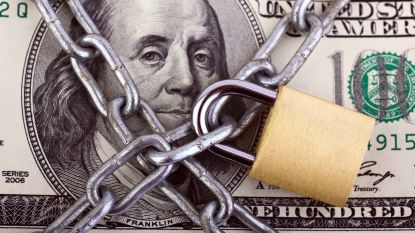There aren’t a lot of safe places to put your money in 2022. Nearly every major asset class is down this year, from stocks to long-term bonds and even traditional haven assets like gold. There simply haven’t been many places to hide.
Year-to-date, the S&P 500 is off about 21%, and the iShares Core US Aggregate Bond ETF (AGG (opens in new tab)), a popular proxy for the “bond market,” is down nearly 17%.
Subscribe to Kiplinger’s Personal Finance Be a smarter, better informed investor.
Save up to 74%
Sign up for Kiplinger’s Free E-Newsletters Profit and prosper with the best of Kiplinger’s expert advice on investing, taxes, retirement, personal finance and more – straight to your e-mail.
Profit and prosper with the best of Kiplinger’s expert advice – straight to your e-mail.
The story actually gets worse with longer-term bonds. The iShares 20+ Year Treasury Bond ETF (TLT (opens in new tab)), which tracks the performance of a portfolio of U.S. government bonds with maturities of 20-30 years, is down a gut-wrenching 35% for the year-to-date, performing materially worse than stocks!
Despite this, if bought correctly, bonds remain a viable option for your safe money… that part of your portfolio you can’t afford to lose.
“U.S. Treasury securities are the only true risk-free investment,” explains Chase Robertson, principal of Robertson Wealth Management, a registered investment advisor (RIA) based in Houston, Texas. “But for them to be truly risk free,” Robertson continues, “you have to hold them to maturity. Because bonds, like any asset, can see their prices fluctuate day to day. And the longer the time to maturity, the more sensitive the bond prices are to changes in interest rates.”
Without getting too technical, the term for this sensitivity is “duration.” And all else equal, the longer the time to maturity, the higher the duration and thus the higher the sensitivity to rising market yields. This is why the iShares 20+ Year Treasury Bond ETF has gotten punished so hard this year. Between surging inflation and the Fed’s decision to discontinue asset purchases earlier this year, bond yields have risen to some of their highest levels in two decades.
Short-term bonds have the least sensitivity to interest rate moves. As a simple example, a two-year zero coupon bond has a modified duration of just shy of 2. In plain English, this means that a 1% move in market yields results in a short-term change in price of about 2%. And naturally, any capital loss shrinks to zero upon maturity, assuming the bond was bought at or below its par value.
The Sweet Spot for Investors TodayIn a “normal” market, longer-term bonds always yield more than shorter-term bonds. It’s the benefit we get from taking more risk. But today, that’s not the case. The yield curve is inverted, meaning shorter-term yields are actually higher than most longer-term yields. As this is going to print, the 1-year yield is the highest point on the yield curve at 4.6%, ever so slightly higher than the 4.5% yield of the 20-year Treasury.
So, if you’re looking for a place to stash your safe money… this is it. At the 1-year mark, your sensitivity to interest rates is minimal, meaning you wouldn’t be at significant risk of capital loss in the event you needed to sell the bond before maturity. And frankly, a 4.6% yield isn’t bad at all by the standards of the past 20 years.
Should You Consider Long-Term Bonds?Given that the 1-year bond sports a higher yield and less risk, why would anyone ever buy a long-term bond?
It really comes down to timing. For example, if you know you’re going to need cash for a major expense in exactly 10 years (say, college education for the grandkids), locking in a 10-year rate could make sense. Assuming you didn’t need to sell the bond before maturity, your risk is still zero. Plus, you’re locking in the rate. Were you to buy a shorter-term bond, you have reinvestment risk. You have no idea what the rate is going to be a year or two from now, and you might get a lousy rate when it’s time to reinvest,
“Longer-term bonds can also serve a speculative purpose,” says Douglas Robinson, founder and president of RCM Robinson Capital Management, an RIA based in San Francisco, California, specializing in Treasury funds management. “Any asset that drops more than 30% in a year, as we saw in longer-term Treasuries, can also rise by a comparable amount if market yields fall.”
Long-term bonds have their place. But for the money you want to keep absolutely safe, stick with the 1-year bonds for now.
